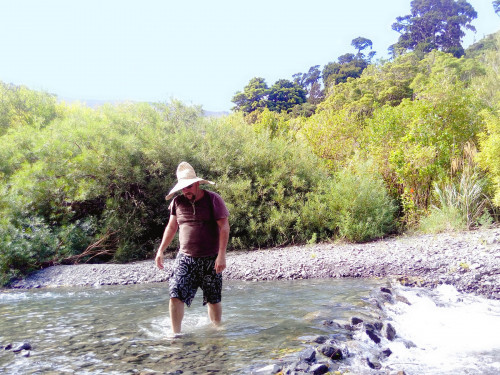
Dale Salamonson knew something wasn’t right when he noticed a strange spot on his right shoulder.
It looked different from the other moles on his body with a dark border around a light spot. With a family history of melanoma, Mr Salamonson was conscious of looking out for new moles or existing moles changing size, shape or colour.
He kept a close eye on the mole, got his wife to take photos so they could track any changes and booked a doctor’s appointment to get it checked.
The results confirmed the spot was melanoma, the most serious type of skin cancer. New Zealand has the highest rate of melanoma in the world with more than 4000 people being diagnosed every year – that’s about 13 a day.
Hawke’s Bay District Health Board Dermatologist Ruud Horlings said early detection was key to treating melanoma.
“If recognised and treated early enough it is almost always curable. However, if the cancer spreads to other parts of the body it can be fatal.” More than 350 New Zealanders die of melanoma every year.
Dr Horlings said the majority of melanoma cases occur in people aged 50 and over – although Mr Salamonson was in his early 40s when he caught his.
“Because he recognised the signs, his melanoma was caught early.”
Three years on from the melanoma being surgically removed, Mr Salamonson has not had any other strange spots. However, he checks frequently.
“I’m paranoid about checking my moles. I always wear a collared shirt and a hat when I’m out fishing and make sure I’ve got plenty of sunscreen on when diving,” Mr Salamonson said.
It is Melanoma Awareness Week from 19 to 25 October and Dr Horlings urged people to take the opportunity to check their body for melanoma, including skin not normally exposed to the sun.
“Get someone to help you check difficult-to-see areas such as your back, neck and scalp and look for anything that seems different, or a bit of an ‘ugly duckling.’ If a mole stands out from nearby moles it is an ugly duckling, and should be checked by a doctor,” Dr Horlings said.
“Look for moles that are asymmetrical, have uneven colour, and are evolving, growing or firm. Also check for new moles as 70 percent of melanoma come from no pre-existing mole,” Dr Horlings said.
“If in doubt, consult your doctor.”






Post your comment
Comments
Nanny Dewes 20 Oct 2020, 12:33 (4 years ago)
Thanks for sharing Dale.
This could just save someone's life...
No one has commented on this page yet.